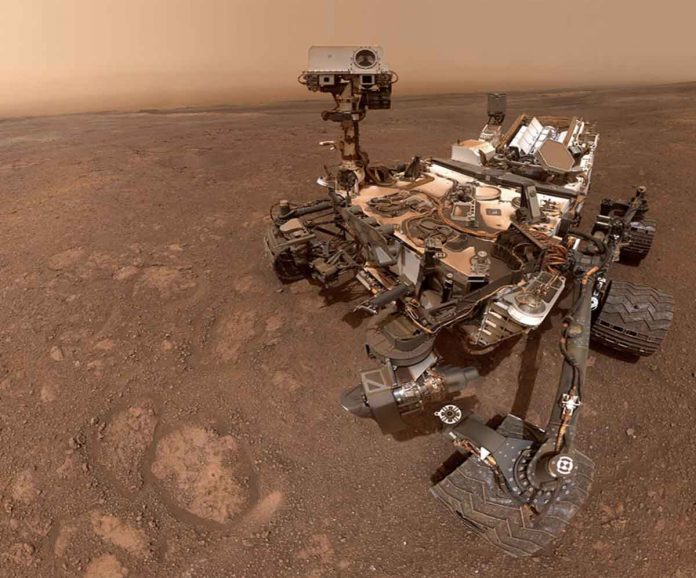NASA’s Curiosity rover has landed on Mars on 2012. It has roamed Gale Crater and took samples. Then sent the results back home for researchers to interpret. Scientists have analyzed carbon isotopes in sediment samples which were taken from half a dozen exposed locations such as exposed cliffs. This leave researchers with three plausible explanations for the origin of the carbon. These are cosmic dust, ultraviolet degradation of carbon dioxide and ultraviolet degradation of biologically produced methane.
Carbon has two stable isotopes, which are 12 and 13. Scientists have looked at the amounts of each in a substance. The they have determined specifics about the carbon cycle which occurred a long time ago.
NASA’s Jet Propulsion Laboratory in Southern California led Curiosity. It has spent the last nine years exploring an area of Gale Crater which has layers of ancient rock. Curiosity drilled into the surface of these layers and collected samples from buried sedimentary layers.
The rover heated the samples in the absence of oxygen to separate chemicals. It has done a spectrographic analysis of a portion of the reduced carbon and showed that a wide range of carbon 12 and carbon 13 is there. Its amount depends on where or when the original sample formed. Some carbon was depleted in carbon 13.
Scientists have explained the exceptionally depleted samples. They suggested three possibilities which are a cosmic dust cloud, ultraviolet radiation breaking down carbon dioxide and ultraviolet degradation of biologically created methane.
Scientists said, every couple of hundred million years the solar system passes through a galactic molecular cloud.
They said, to create a layer that Curiosity could sample, the galactic dust cloud has lowered the temperature on Mars which formed water and created glaciers. Then the dust would have deposited on top of the ice. It then remained in place once the glacier melted and left behind a layer of dirt that included the carbon.
Scientists also gave a second explanation which is the ultraviolet conversion of carbon dioxide to organic compounds like formaldehyde for lower amounts of carbon 13.
Third explanation of producing carbon 13 depleted samples has a biological basis.
A strongly carbon 13 depleted signature from a paleosurface would indicate past microbes consumed microbially produced methane on Earth. Mars may have had large plumes of methane released from the subsurface where methane production were favorable. The released methane then would either be consumed by surface microbes. Or it can react with ultraviolet light and be deposited directly on the surface.
Scientists said, there is currently no sedimentary evidence of surface microbes on the past Mars landscape. The biological explanation of the paper relies on ultraviolet light to place the carbon 13 signal onto the ground.
The rover is still collecting and analyzing samples. It will be returning to the pediment where it found some of the samples in this study in about a month.

